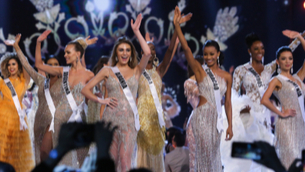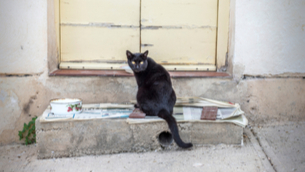Nouns & Articles
I. Intro: Nouns, gender & articles
For our first lesson, we’ll go back to basics. We’re going to talk about nouns, gender, & articles: what they are, why they’re important, how to use them, and a few tricks to identify the meaning of lots of new words you’ve never seen before.II. Grammar: Gender of nouns
Do you remember what a noun is? A noun gives a name to a person, place, thing, or idea. Nouns answer the question “Who is it?” and “What is it?”Just like in English, a noun – or sustantivo, in Spanish – is: una persona (a person), un lugar (a place), una cosa (a thing), or una idea (an idea).
Nouns can refer to living things or non-living things. In English, some nouns that refer to living things have gender. Think about words like king/queen, waiter/waitress, bull/cow. They tell you the gender of the person or animal that you’re talking about. Only living things can have gender in English.
Masculine | Feminine |
| uncle | aunt |
| king | queen |
| waiter | waitress |
| bull | cow |
In Spanish, living things have gender, too:
Masculine | Feminine |
| el tío (uncle) | la tía (aunt) |
| el rey (king) | la reina (queen) |
| el camarero (waiter) | la camarera (waitress) |
| el toro (bull) | la vaca (cow) |
But unlike English, all nouns have gender in Spanish. Living things, like people and animals, have an obvious inherent gender. Everything else – non-living things, places and ideas – all have gender, too. Everything is either masculine or feminine.
Let’s take a look at a few examples:
Masculine | Feminine |
| el impacto (impact) | la diferencia (difference) |
| el motor (motor) | la comunidad (community) |
| el vocabulario (vocabulary) | la comunicación (communication) |
| el departamento (department) | la expresión (expression) |
For non-living things, the gender may not seem apparent at first, but there are some easy ways to pick up on a word’s gender, which we’ll cover later.
III. Grammar: Gender of articles
In both English and Spanish, we can refer to nouns in general terms (indefinite), or specific terms (definite). It’s the difference between saying “a boy” and “the boy.” In English, the words “a” and “the” are called articles. “a/an/some” are indefinite articles, and “the” is the definite article.Remember what we said about all nouns having gender in Spanish? That applies to the articles, too. While English has a total of 4 articles, Spanish has 8. One set that is masculine, and one set that is feminine.
- The indefinite articles are un, una, unos, unas
- And the definite articles are el, la, los, las
Indefinite article: un, una, unos, unas | Definite article: el, la, los, las | |||
Singular | Plural | Singular | Plural | |
masculine | un chico | unos chicos | el chico | los chicos |
feminine | una chica | unas chicas | la chica | las chicas |
IV. Gender patterns
Now let’s start building up your vocabulary by learning a few simple patterns:1. Many nouns that denote living things have both a masculine and a feminine form.
- Most nouns that end in -o are masculine = tío, chico, amigo
- Most nouns that end in -a are feminine = tía, chica, amiga
- el director, la directora
- el profesor, la profesora
- el campeón, la campeona
- el bailarín, la bailarina
- el artista, la artista
- el cliente, la cliente
- el líder, la líder
- El artista, los artistas
- La líder, las líderes

























